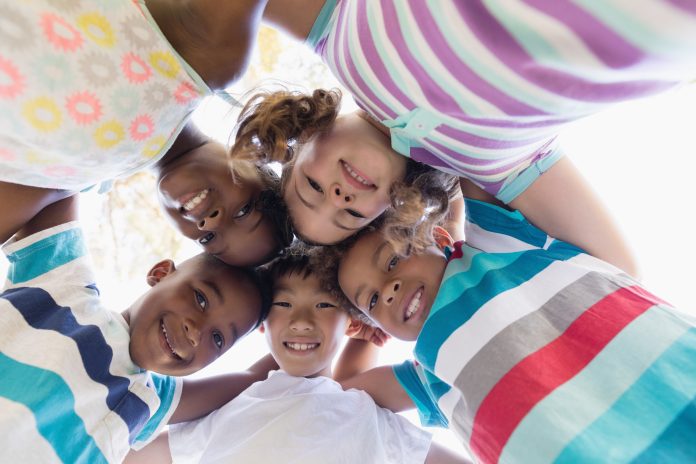Many children do not have enough social interactions with their peers. In today’s sedentary world, children are more likely to stay at home and have their time dominated by electronics such as smartphones and televisions. Many children are missing out on the social and emotional development that can occur when children interact in a structured setting, and this is putting them at a disadvantage as they grow older and enter the working world. Lee Pinstein of Maplewood Country Day Camp examines this problem in depth and offers suggestions for concerned parents who want to make sure their child is developing properly on a social level.
Starting Young
From birth and early infancy, children begin to learn their place in the world based on their interactions with others. Loving bonds with parents, caregivers, and siblings foster their initial social growth. Children who are treated lovingly and fairly will have an easier time with later social interactions than children who are raised in a harsh environment. Children develop the building blocks of their personality and problem-solving abilities through social interactions.
Toddler Years
Social development in the toddler years can be thought of as laying the groundwork for later interactions with peers and coworkers. Young toddlers frequently have difficulty navigating shared play experiences with other children, and this is normal and developmentally appropriate. Children who have practice in social situations will gradually be able to handle the dynamics of group play and will need less intervention from parents or caregivers.
Emotional regulation can be difficult for young toddlers. Modeling the skills needed to get along in a group is the best way to show children how to handle complex situations. Parents and caregivers need to understand that patient repetition is the way to handle emotional situations with toddlers and young children. Even though this may be challenging, it is ideal that children begin to have social interactions with their peers at this age.
Preschool
Between the ages of three and five, young children are considered preschoolers. Preschool is a structured learning environment which supports children’s social, emotional, and academic skills. As with toddlers, teachers and parents should know that children will not instantly step into a school setting and behave appropriately. Problems with sharing and aggression are common at this age, along with emotional regulation.
Parents and teachers should help children by giving them a framework in which to interact with their peers. For example, if a child is having difficulty getting a friend’s attention, a teacher should model a good way to do so. Children benefit from having social skills taught to them by a person other than their parents. This enables children to learn to break free of dependence and seek the tools to solve problems head on; both of which are crucial in the business world. Social development is a great benefit of sending a child to preschool or daycare.
Elementary School
When a child steps into kindergarten, the issues that defined social interaction in preschool are still present. Classroom teachers have a unique responsibility to foster a child’s social and emotional development while imparting academic concepts at the same time. Many parents take the work of teachers for granted, but they should consider how much work goes into each facet of a child’s development.
Social and emotional development is not limited to the school year. In day camp, social skills are taught along with the wide variety of fun activities that are available. Children may find that they have an easier time learning social skills when they are not trying to absorb academic concepts at the same time. Keeping away from screens and sharing fun activities like swimming, crafts, and sports helps children bond with their peers and create fruitful relationships.
Middle and High School
This is the age group where young people are most likely to withdraw from their peers and to spend most of their time indoors and using electronic devices. This situation does nothing for their social skills. Middle and high schoolers benefit from social interactions at school and work.
Middle schoolers frequently have issues with bullying and appropriate social interaction with their peers. Sending children to camp where they can interact with a different set of people than they meet every day at school can be a huge benefit.
Even high schoolers need help with social interactions. The time in their lives when they will be held to adult standards is approaching quickly. They may have new concerns like how to navigate a romantic relationship and how to interact with their peers in a positive manner. Special interest camps are great for high schoolers, along with working as a counselor in camps for younger children. Special interest camps help children who struggle socially in high school to find a friendly peer group. This is also a fruitful endeavor for teaching children the ability to push through perceived failure and find a path forward. This is pivotal for the emotional and professional development of children who are nearing the age to enter the workforce.
Fostering Proper Social Development
Lee Pinstein of Maplewood Country Day Camp advocates for strong social skills and reminds parents that social development can occur in and outside of school. Camps are a particularly good way to keep social development going during the summer because they provide all children with a place to shine.
Find a Home-Based Business to Start-Up >>> Hundreds of Business Listings.

















































